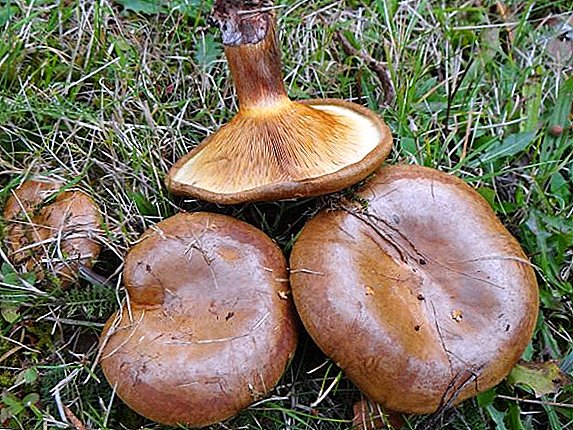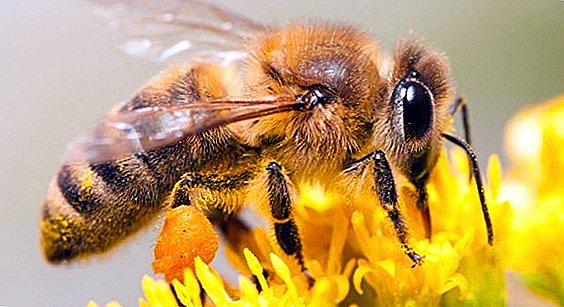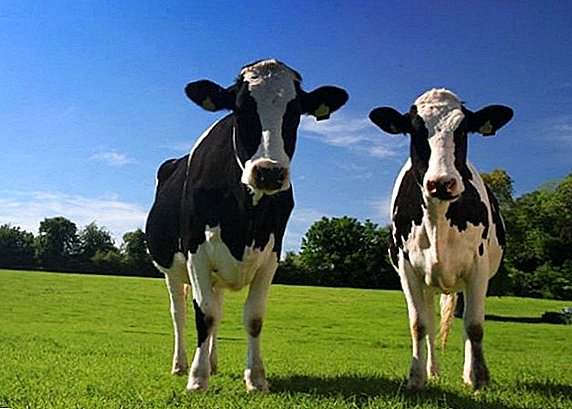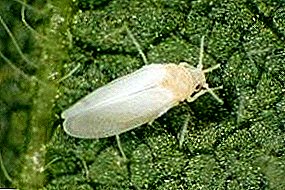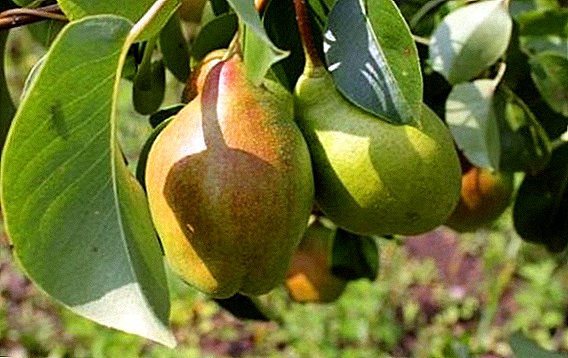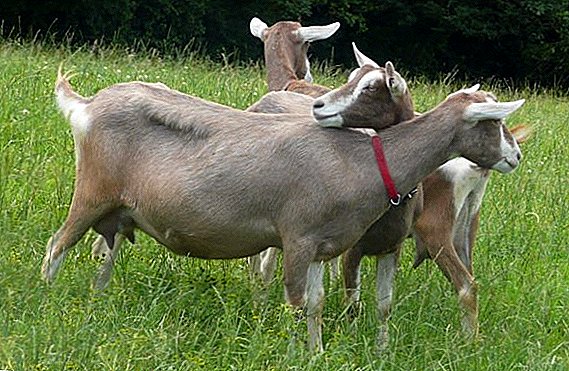 Today, the breeding of goats on household plots is no less popular than before. And with the emergence of new modern breeds bred for specific purposes, obtaining milk, meat, wool, and taking into account the small size of the animal, even beginning goat growers, following simple rules of keeping, will receive in prosperity healthy, hypoallergenic goat milk. The article gives the names of goat breeds that have proven themselves to be the best "producers" of milk, as well as tips on how to keep these animals and what kind of care to provide.
Today, the breeding of goats on household plots is no less popular than before. And with the emergence of new modern breeds bred for specific purposes, obtaining milk, meat, wool, and taking into account the small size of the animal, even beginning goat growers, following simple rules of keeping, will receive in prosperity healthy, hypoallergenic goat milk. The article gives the names of goat breeds that have proven themselves to be the best "producers" of milk, as well as tips on how to keep these animals and what kind of care to provide.
The best goat breeds
Among the "dairy" breeds are considered the best:
- Zaanenskaya. It is considered the most "milky" among milking breeds. Individuals large, weighing 90 kg. Lactation lasts 11 months a year. The average is 1000 liters of milk per year. With rational animal feed, milk yields are compared to cow's — about 3 tons of milk per year. Milk contains from 3.7% to 4.5% fat. Breed well acclimatized, but does not tolerate heat. The average life expectancy is 8 years. The Zaanen breed is crossed with other breeds to increase milk production.

- Toggenburg. Bred in Switzerland. A little smaller than Zaanensky, adult females weigh about 55 kg. During the lactation period get about 100 liters of milk (3-8% fat).
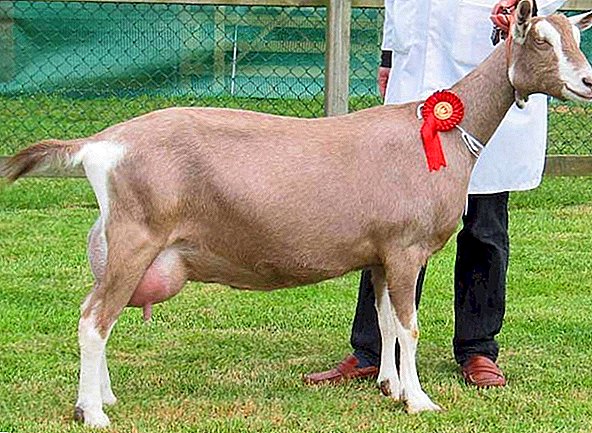
- Gorky Dairy. Individuals of strong build, medium size. The weight of the female is approximately 45 kg, the male 60 kg. The milk yield values (5.5% fat) range from 500 to 1000 liters. The breed is multifarious, up to 5 kids can be born in one lambing. Valued as a meat, as well as the quality of the skins. The term of maintenance is 10 years.

- Russian white. Bred in Russia. Actively bred in the post-Soviet countries. High milk production, about 600 liters per year, milk fat content 5%. 2-3 baby goats are born. Also, the breed is valued for the skin. Contain about 10 years.
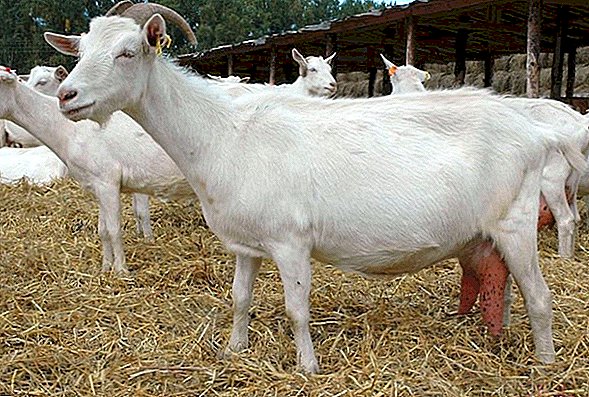
- Megrelian. Massive, about 70 cm at the withers, weight - 45 kg, the body is strong, long. Have small horns. High fertility, milk (5% fat) give a rational care up to 800 liters per year, which is the raw material for cheese, cottage cheese. Resistant to disease breed, if necessary, content with pasture. The disadvantage is not suitable for breeding in cold climates.

- Alpine. Large, multiple (up to 4 babies in the pot), high milk yield (up to 1300 liters of milk per year), simple in content. Animals have a docile temperament, therefore, recommended for breeding novice goats. Representatives of this breed can climb trees to eat leaves.

- Nubian. Large (55-70 kg), high at the withers, legs thin and long. The coat is smooth to the touch, short. Differs breed high yields of milk fat (8% fat) - 900 liters per year. The breed is also bred for meat.

- Cameroon. Popular with farmers. Differs miniature, females weigh up to 15 kg, males - up to 25 kg. Milk is rich in fat, odorless, perfectly stored in the refrigerator - up to two weeks. Per day from one individual receive an average of 1.5 liters of milk. The breed perfectly adapts to both heat and cold. It has a long life.

- German Sparkling. Large (females up to 70 cm at the withers, males up to 90 cm), a highly productive breed. It gives about 1100 liters of milk 4% fat content per year. An animal with a calm, balanced disposition.

- Lamancha. A very large breed, goat mass reaches 65 kg, goat - to centner. Multiple, give birth to up to 4 kids in the lambing. High milk yield gives 8 liters of milk per day. Live for about 15 years, while maintaining productivity. Undemanding to care.

Which breeds of unscented milk?
An important criterion for the quality of milk is the presence or absence of odor.
Breeds whose milk does not have a pronounced flavor:
- zaanenskaya;
- toggenburg;
- nubian;
- Russian white;
- high mountain alpine dairy;
- Cameroon dwarf;
- marl
Did you know? Goats - the discoverers of coffee trees. Thanks to these animals, people have introduced this invigorating drink into their diet.
External features
Before you buy an animal, you must carefully examine it. The main thing to focus on when buying a dairy goat is the condition of the udder: it must be elastic, voluminous, with smooth thin skin and clearly protruding milk veins.
Do not neglect the appearance of the animal. Wool should shine, the backbone should be strong, legs - straight, somewhat spaced in width. It is worth paying attention to the state of the hooves. If possible, study the pedigree.
Other signs of dairy breed:
- The back is wide, straight, parallel to the ground.
- The chest is deep.
- The belly is rounded.
- Hind legs due to the udder are wider than the front.
- Udder elastic, elongated or spherical shape. Should not hang down.
- After the goat is milked, the udder decreases and changes shape, folds appear. If this does not happen, then the udder is considered fat and there will be little milk.
- Nipples should diverge to the sides, the udder itself should not hang down (when walking should not hang out);
- The veins on the udder should be textured, be thick, and the thicker they are, the higher the milk yield.

Experts in the field of goat breeding say everything about the age of the animal will "tell" the state and number of teeth, and the presence or absence of a beard, horns, the appearance of the hooves, should not be taken into account in determining the age.
Important! Before milking you should shave the bristly hairs off the nipples. First, they can accumulate microbes, and secondly, during milking, you can hurt the animal, pulling the hairs.
Breeding characteristics
To obtain high-quality milk, it is necessary to rationally and responsibly approach the process of home keeping and the rules of goat care.
Feeding ration
On how correctly compiled the diet of animals, taking into account the time of year, depends on their health and performance.
Summer
Summer is a good time to feed the goats. The main food consists of succulent vegetation, which animals receive on grazing. Goats can graze on a leash, but for proper digestion animals need movement. In this regard, the loose housing content of dairy breeds should be a priority.
The ration is composed in the following proportions: 2/3 of the volume of the daily norm of food should be juicy food, 1/3 of the diet - salt and concentrated food. 
In winter
In the winter season, feeding by hours is important. In the morning, the diet consists of vegetables, hay, a dose of feed. Brooms, hay, vegetables should be introduced into the daily ration in the diet, and in the evening hours - juicy raw food (vegetables, silage, tops), mixed feed, hay.
Conditions for content
Next, consider what conditions for life you need to create goats.
Read also how to contain and how to feed dairy goats.
Room Requirements
It should be spacious, with good ventilation, sufficiently illuminated, the air temperature in winter should not fall below + 4 ° С, and in summer - + 18 ° С.
The floor should remain dry, so lay down straw or lay a layer of peat. The litter is changed regularly. Since only goats are sleeping on litter, it is necessary to equip the cattle with floorings that are slightly higher than the floor level, as goats sleep on elevated surfaces.
In order for the animal not to experience stress due to crowding, there should be 4 m² of free space per individual.

The room should be equipped with comfortable, easily washable feeders for the number of goats that it contains.
Every day an adult animal needs to drink at least 5 liters of water, therefore the rooms where animals are kept are equipped with drinkers, which are regularly cleaned of dirt.
Grazing features
For high-grade, rich milk yields, goats need to eat rich grasses and consume enough water in the summer. Therefore, the preferred range of grazing animals in the summer season - a meadow or forest. Goats prefer fir twigs, tree bark, elderberry, meadow grasses. Thanks to this diet, the body receives a supply of essential vitamins, micro and macro elements.
Important! With free grazing, it is important to ensure that animals do not drink water from reservoirs with stagnant water (pond, meliorative ditch). There is a high risk of infection with parasitic diseases that are hard to cure and can cause death.
How often to water?
As mentioned above, goats need sufficient water supply, so care should be taken to ensure that summer grazing is accessible to a clean source of drinking, and during the winter period the water in the drinkers should be at room temperature, because when the body is dehydrated, animals lick snow or melt water, which leads to a violation of the thermoregulation of the body. And this, in turn, can cause diseases of various etiologies.
How many live?
The life expectancy of goats depends on the belonging to the breed, conditions of detention, diet, climatic living conditions. For dairy breeds, this period is set at 8-10 years. With proper care and nutrition, animals give milk and give birth to offspring at the age of 12-15 years.
How to milk?
After lambing, the goat begins to be milked in order to produce milk for nutritional needs on an ongoing basis. 
It is necessary to adhere to the rules:
- produce milking in a relaxed atmosphere, install a feeder with food and drink in front of the goat, so that the animal does not reveal undue anxiety;
- before milking, trim the wool on the udder;
- wash udder with warm water, dry with a towel;
- for greater "return" of milk, massage the udder for a few minutes;
- the first few streams of milk merge, as they may contain pathogenic bacteria;
- in order to prevent the development of mastitis, the goat should be given out completely, avoiding milk stagnation;
- You can not sharply pull over the nipples, squeeze the udder - these actions can reduce the yield and lead to undesirable consequences in the health of the animal.
Did you know? It is proved that goat milk removes radionuclides from the body.
Features of growing kids
After lambing has occurred in a dairy goat, young growth is separated from the mother and grown separately. The exception is the low productivity of the animal.
- 2 hours after giving birth, the kids are watered with freshly warmed, filtered colostrum. It strengthens the immune system, laying the foundation of good health for years to come.
- In the first month of life kids are fed every 5 hours. In summer, the first feeding is carried out - at 5 o'clock, the last - at 20 o'clock. In the winter months, respectively, at 6 am and 9 pm
- From the age of half a month, kids are introduced into the diet of freshly prepared, strained oatmeal, finely chopped root crops, mixed fodder, and hay. It is important to introduce in the diet table salt - up to 6 g per day.
- At the age of one month the young are released on pasture. In winter weather, at not very low temperatures, kids "walking" in the open air up to 5 hours.
- When kids reach the age of 8-9 months, about 1 kg of succulent fodder, 300 g of feed and about one and a half kilograms of hay should be present in their daily ration.

Tips for beginners
Recommendations for beginners goat breeders:
- Breeding goats should begin with the purchase not of adult animals, but kids. An adult animal is tied to its congeners and owners, therefore, once in a different habitat, it can begin to yearn, and this will directly affect the yield and health in general.
- Goats are freedom-loving animals, therefore, in the absence of a herd, animals should be fed at least twice a day. This will have a positive effect on milk yield.
- The diet of animals should be varied, especially in the winter. Feed should consist of branches, hay, and root crops.
- Keep goats in a clean, well heated and lighted pen.
- In the care, and especially when milking the goats, you must be patient and affection. This acts relaxingly on the animal, and the amount of milk increases.
Find out also what to do if the goat stopped giving milk.
With the right choice of animal breed, taking into account the physical data of the individual and its ancestors, subsequent proper care and maintenance, there will always be on the table not only the most valuable goat milk in composition, but also cheeses, cottage cheese, fermented milk drinks. And these products are indispensable in children's and medical nutrition.














